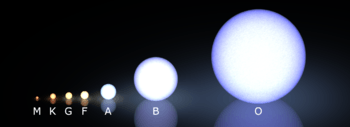HD 138573
| Observation data Epoch J2000 +10°58'05.9" Equinox J2000 +10°58'05.9" | |
|---|---|
| Constellation | Serpens |
| Right ascension | 15h 32m 43.65s[1] |
| Declination | +10° 58′ 05.9″[1] |
| Apparent magnitude (V) | 7.215 |
| Characteristics | |
| Spectral type | G5IV-V [2] |
| B−V color index | 0.413 |
| Astrometry | |
| Proper motion (μ) | RA: mas/yr Dec.: > mas/yr |
| Details | |
| Temperature | 5689 [3] K |
| Metallicity | −0.10 [3] |
| Age | 5.6 years |
| Other designations | |
HIP 1989,TYCHO-2 2000, TYC 932-962-1, USNO-A2.0, USNO-A2 0975-07872009. | |
| Database references | |
| SIMBAD | data |
| Data sources: | |
| Hipparcos Catalogue, CCDM (2002), Bright Star Catalogue (5th rev. ed.) | |
HD 138573 is G-type main-sequence star in the constellation Serpens, class G5IV-V, roughly 100.8 light years from Earth (30.912 parsecs). [1][2] Though a G type star like the Sun, a 2005 study found that it is not a solar twin as HD 138573 has a much lower mass, lower metallicity, and is much older age than the Sun at 5.6 billion years old. HD 138573 is otherwise close to the Sun's characteristics and could be classed as a Solar analog.
Sun comparison
This chart compares the Sun to HD 138573.
| Identifier | J2000 Coordinates | Distance (ly) |
Stellar Class |
Temperature (K) |
Metallicity (dex) |
Age (Gyr) |
Notes | |
|---|---|---|---|---|---|---|---|---|
| Right ascension | Declination | |||||||
| Sun | — | — | 0.00 | G2V | 5,778 | +0.00 | 4.6 | [4] |
| HD 138573 [5] | 15h 32m 43.7s | +10° 58′ 06″ | 101 | G5IV-V | 5,689 | −0.10 | 5.6 | [6][7][2] |
To date no solar twin with an exact match as that of the Sun has been found, however, there are some stars that come very close to being identical to that of the Sun, and are such considered solar twins by the majority of the public. An exact solar twin would be a G2V star with a 5,778K temperature, be 4.6 billion years old, with the correct metallicity and a 0.1% solar luminosity variation.[8] Stars with an age of 4.6 billion years are at the most stable state. Proper metallicity and size are also very important to low luminosity variation. [9][10][11]

See also
References
- 1 2 3 "HD 138573". sky-map.org. 2004. Retrieved 2016-06-23.
- 1 2 3 "HD 138573". simbad. 2004. Retrieved 2016-06-23.
- 1 2 "New solar twins and the metallicity and temperature scales of the Geneva Copenhagen Survey ⋆" (PDF). arxiv. Retrieved 2016-06-23.
- ↑ Williams, D.R. (2004). "Sun Fact Sheet". NASA. Retrieved 2009-06-23.
- ↑ HD 138573 at SIMBAD - Ids - Bibliography - Image.
- ↑ Porto de Mello, G. F.; da Silva, R.; da Silva, L.; de Nader, R. V. (March 2014). "A photometric and spectroscopic survey of solar twin stars within 50 parsecs of the Sun; I. Atmospheric parameters and color similarity to the Sun". Astronomy and Astrophysics. 563: A52. arXiv:1312.7571
 . Bibcode:2014A&A...563A..52P. doi:10.1051/0004-6361/201322277.
. Bibcode:2014A&A...563A..52P. doi:10.1051/0004-6361/201322277. - ↑ King, Jeremy R.; Boesgaard, Ann M.; Schuler, Simon C. (November 2005). "Keck HIRES Spectroscopy of Four Candidate Solar Twins". The Astronomical Journal. 130 (5): 2318–2325. arXiv:astro-ph/0508004
 . Bibcode:2005AJ....130.2318K. doi:10.1086/452640.
. Bibcode:2005AJ....130.2318K. doi:10.1086/452640. - ↑ NASA, Science News, Solar Variability and Terrestrial Climate, Jan. 8, 2013
- ↑ University of Nebraska-Lincoln astronomy education group, Stellar Luminosity Calculator
- ↑ National Center for Atmospheric Research, The Effects of Solar Variability on Earth's Climate, 2012 Report
- ↑ Most of Earth’s twins aren’t identical, or even close!, by Ethan on June 5, 2013
Coordinates: ![]() 15h 32m 43.65s, +10° 58′ 05.8″
15h 32m 43.65s, +10° 58′ 05.8″